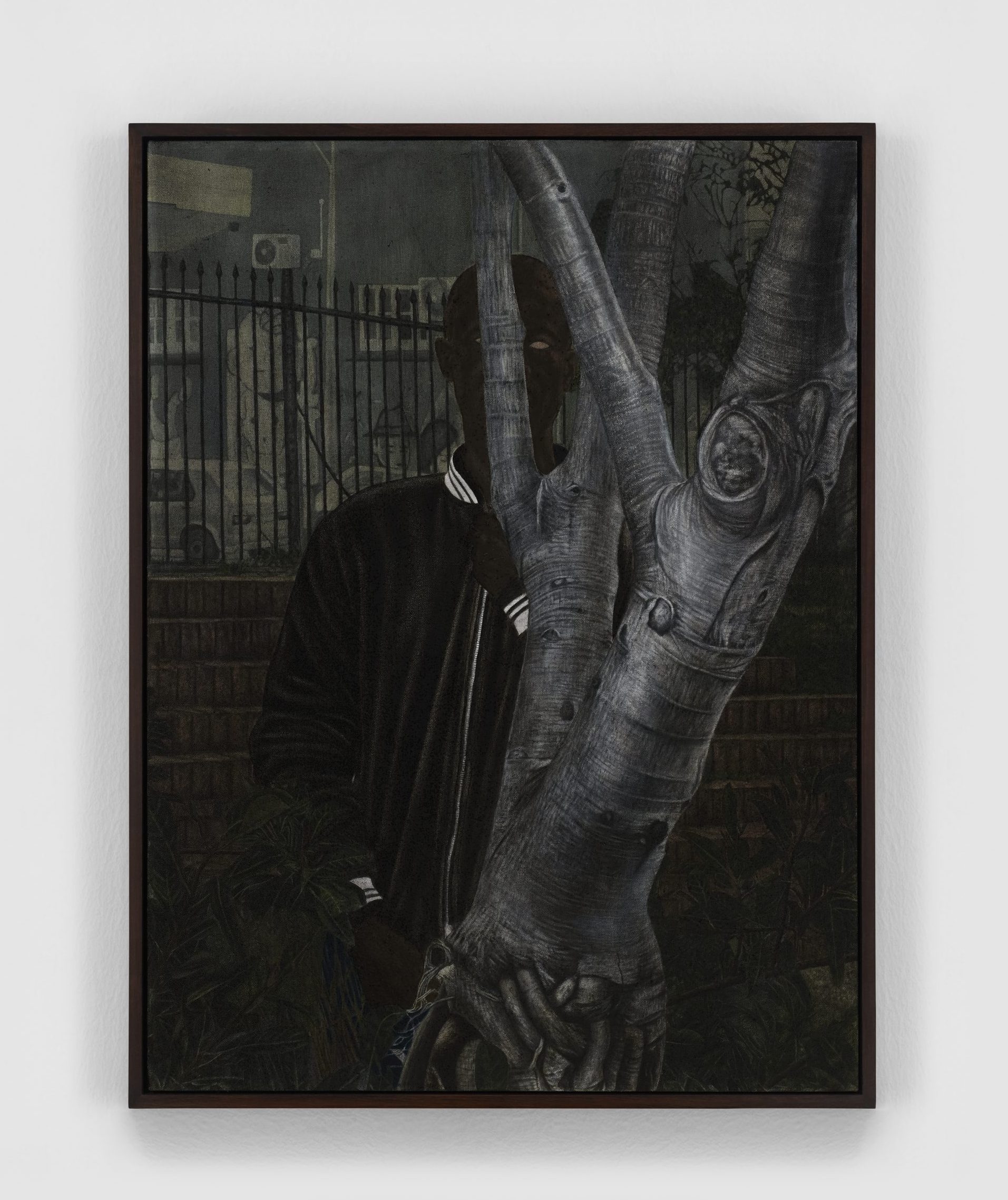
Cinga Samson, Okwe Nkunzana 2, 2021. Oil on canvas. 23 5/8 × 31 1/2 × 1 3/4 inches (60 × 80 × 4.5 cm). Gift of Nicholas Tan. Courtesy the artist and White Cube, London. © Cinga Samson
Based in Cape Town, South Africa, Cinga Samson is a self-taught figurative painter, whose works on canvas evoke a haunting playfulness at the boundary between the real and the imaginary. Samson’s subject matter ranges from still lifes to portraits of young men, who often sport postures of luxury, confidence, and desire that are nonetheless infused with an otherworldly spirituality. The color, tone, and lighting in his canvases further this dynamic, creating a charged, enigmatic atmosphere within which his subjects linger, as though between states of reality and with a sense of quiet self-possession.
Samson’s subjects often appear to exist within their own worlds, holding themselves at a distance from the viewer while still open to the engagement of looking and being perceived. To emphasize this notion of distance and withholding, Samson deploys careful attention to the thickness and density of paint over his canvases, which create shifting registers of luminosity that transform the finished scenes into uncanny windows into another worldview. Okwe Nkunzana 2 is one in a group of paintings Samson made responding to feelings of loss, aggression, violence, and grief following the Covid-19 pandemic and the death of his father, among other personal events. According to the artist, the series title translates to “devil’s thorn,” a type of thorny plant common to South Africa, that also doubles as an Xhosa idiom for someone who is bothersome (i.e., a thorn in one’s side). In making this series, Samson turned to portraits of young men in haunting, discomforting scenes that suggest an eerie stillness or unresolved spirituality. In this painting, the subject emerges between two grounds—a gated domestic exterior in the background, and a garden tree rendered in silver in the foreground. Between the tree limbs stands a lone figure, dressed in a luxury jacket and peering back at the viewer with Samson’s signature all-white blank eyes, suggestive of a specter or a spiritual avatar. For Samson, the figure’s return of the gaze is an important aspect to the subversive tone of his portraits: “They’re present, they are there. You are starting to move toward them, and they are aware of your presence… . They seem to be saying that you need to be cautious, don’t get any closer.”